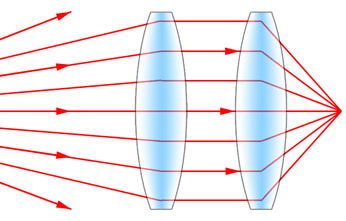One possibility might be to use an old film based moving slot shutter panoramic camera - these used to be used for things including photos of large groups of
people (for example, school photos).
To allow for the panoramic format, without excessively complex lenses, rather than using a conventional full frame shutter, the camera basically used a rotating (around a vertical axis) lens assembly with a slot (and I think it may have curved the film plane as well).
As the lens rotated, the slot meant that only a thin vertical strip of the film was being exposed at any time - a bit like a dual curtain SLR shutter at high speeds, except that I believe the panoramic camera may have controlled the exposure by changing the rotation speed.
So when you took a
picture, it would start exposing at one side of the subject, and scan across to the other side. Apparently, if you were very quick, it was sometimes possible to appear in the photo twice, if you could get to the other end after it'd exposed your original position.
With a suitable close up lens, you might be able to flip and move the card to the other side before it exposed that part.
A more modern (and probably simpler) alternative would be to flip the card on a flatbed scanner, after it's scanned the first side.




